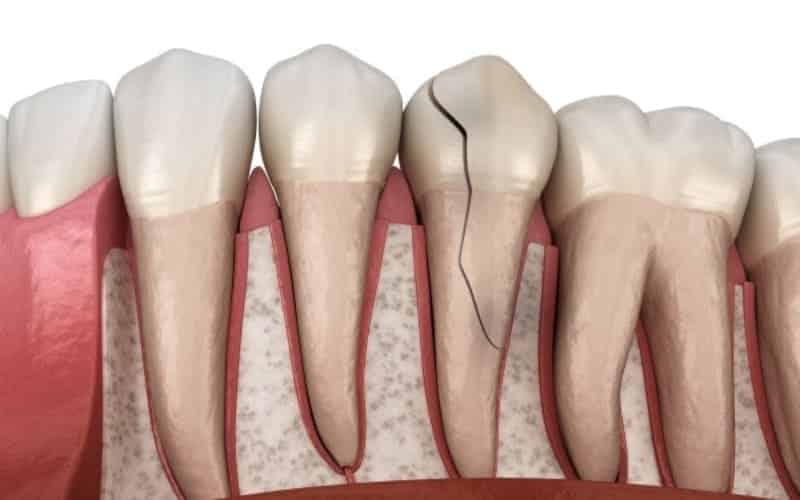
Do you ever wonder why your dentist always stresses the importance of maintaining good oral hygiene? Well, it’s because neglecting our oral health can lead to some serious consequences. From tooth decay to oral thrush, there are a plethora of oral health diseases that could plague our smiles if we aren’t careful. Understanding these conditions is the first step towards proactive oral care, ensuring your smile stays bright and healthy. Here, we will explore five common and potentially devastating dental conditions that you need to be aware of. So get ready to dive into the world of oral health as we uncover these pesky diseases and learn how to prevent them!
Mentioned below are the names of the oral health diseases that need to be taken care of:
1. Tooth Decay (Dental Caries): The Silent Invader
Tooth decay, which is also referred to as dental caries or cavities, is a common problem affecting oral health. It happens when bacteria in the mouth produce acids that gradually wear away the enamel, which is the protective outer layer of the teeth. If left untreated, decay can progress deeper into the tooth, leading to pain, infection, and even tooth loss.
Prevention and Treatment
Maintaining effective oral hygiene practices is paramount to warding off tooth decay. Regular brushing with fluoride toothpaste helps remove plaque, the primary culprit behind decay. Flossing complements brushing by cleaning between the teeth and along the gumline.
Routine dental check-ups are vital for professional cleanings and the early detection of cavities. Incorporating a balanced diet and minimizing sugary snacks further fortifies your defense. In cases of decay, treatments range from dental fillings for minor cavities to more extensive procedures like root canals for advanced decay, preserving the natural tooth structure.
2. Gum Disease (Periodontal Disease): The Silent Progression
Gum disease, or periodontal disease, is a chronic inflammatory condition that affects the gums and, in severe cases, the bones supporting the teeth. It begins with the accumulation of plaque, leading to inflammation, and, if untreated, can progress to gum recession, tooth loss, and systemic health issues.
Prevention and Treatment
Preventing gum disease involves a multi-faceted approach. Effective oral hygiene practices, including thorough brushing and flossing, are foundational. Regular professional cleanings remove plaque and tartar, preventing the progression of gum disease.
Adopting a healthy lifestyle by avoiding tobacco and managing stress contributes significantly. In cases of gum disease, treatment may involve scaling and root planing to deep clean the pockets around teeth. Severe cases may require surgical interventions like flap surgery or tissue grafts to restore gum health.
3. Oral Cancer: The Stealthy Threat
Oral cancer has the potential to impact various parts of the mouth, including the lips, tongue, cheeks, and throat. It often goes unnoticed in its early stages, making regular oral cancer screenings crucial. Utilization of tobacco products, consumption of excessive amounts of alcohol, and infection with the human papillomavirus (HPV) are all risk factors.
Prevention and Early Detection
Preventing oral cancer involves minimizing risk factors. Quitting smoking, moderating alcohol consumption, and reducing HPV exposure are key preventive measures. Regular screenings during dental check-ups aid in early detection.
Additionally, self-examination is crucial. Being vigilant for any persistent sores, discoloration, or unusual changes in the mouth prompts early intervention. Treatment for oral cancer may involve surgery, radiation therapy, or chemotherapy, highlighting the importance of early detection for successful outcomes.
4. Tooth Sensitivity: The Discomfort Dilemma
Tooth sensitivity is defined by a strong pain or discomfort that occurs while ingesting meals and beverages that are hot, cold, sweet, or acidic. It occurs when the protective enamel wears down, exposing the sensitive dentin layer.
Prevention and Management
Addressing tooth sensitivity begins with gentle oral care. Using a soft-bristled toothbrush and employing gentle brushing techniques minimizes enamel wear. Desensitizing toothpaste, specifically formulated to alleviate sensitivity, provides relief. Identifying and addressing the underlying cause, such as gum recession or enamel erosion, is crucial.
Professional interventions may include fluoride treatments or dental bonding to shield exposed dentin. Adopting a holistic approach to oral care ensures ongoing management and prevention of tooth sensitivity.
5. Oral Thrush: The Fungal Foe
Oral thrush, a fungal infection caused by Candida yeast, manifests as white lesions on the tongue, inner cheeks, and throat. It often occurs in individuals with weakened immune systems, diabetes, or those taking certain medications.
Prevention and Treatment
Preventing oral thrush involves maintaining good oral hygiene. Regular brushing, flossing, and tongue cleaning reduce the risk of fungal overgrowth. Managing underlying conditions, such as diabetes, that contribute to thrush is essential. Antifungal medications, either topical or systemic, are prescribed for treatment.
In severe cases, addressing contributing factors, like adjusting medication regimens, may be necessary. Preventive measures, coupled with timely and targeted treatment, ensure effective management of oral thrush and promote overall oral health.
Understanding these common oral health diseases empowers individuals to take proactive steps toward maintaining optimal oral well-being. Incorporating good oral hygiene practices, regular dental check-ups, and a healthy lifestyle form the foundation of a resilient and vibrant smile. Remember, prevention is key. Embrace a holistic approach to oral care, addressing not only the symptoms but also the underlying factors contributing to oral health diseases. Consult with your dentist regularly, share any concerns promptly, and begin a journey toward a lifetime of radiant smiles and overall well-being.




